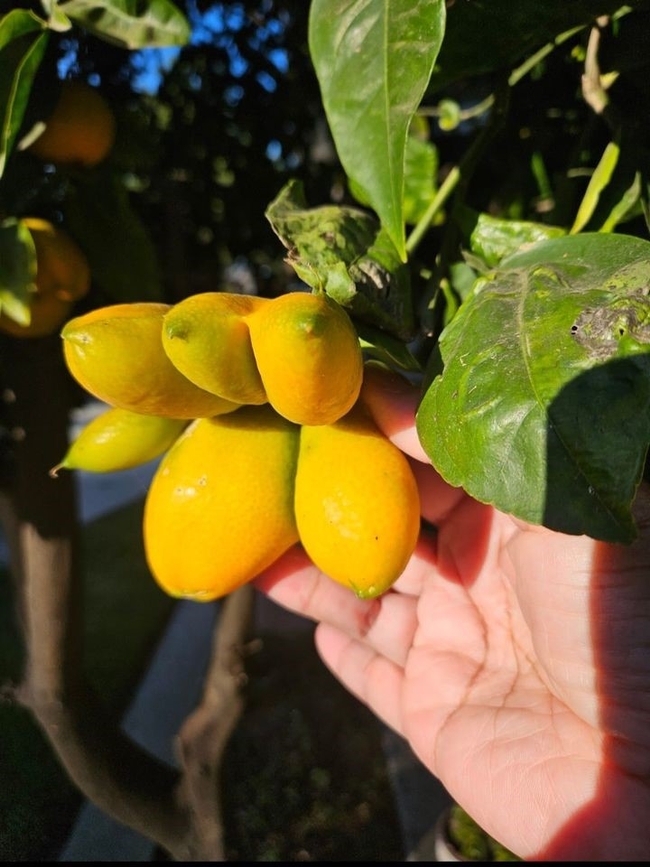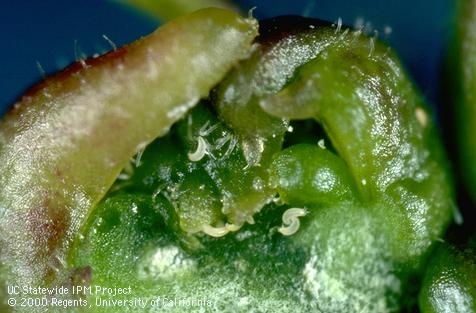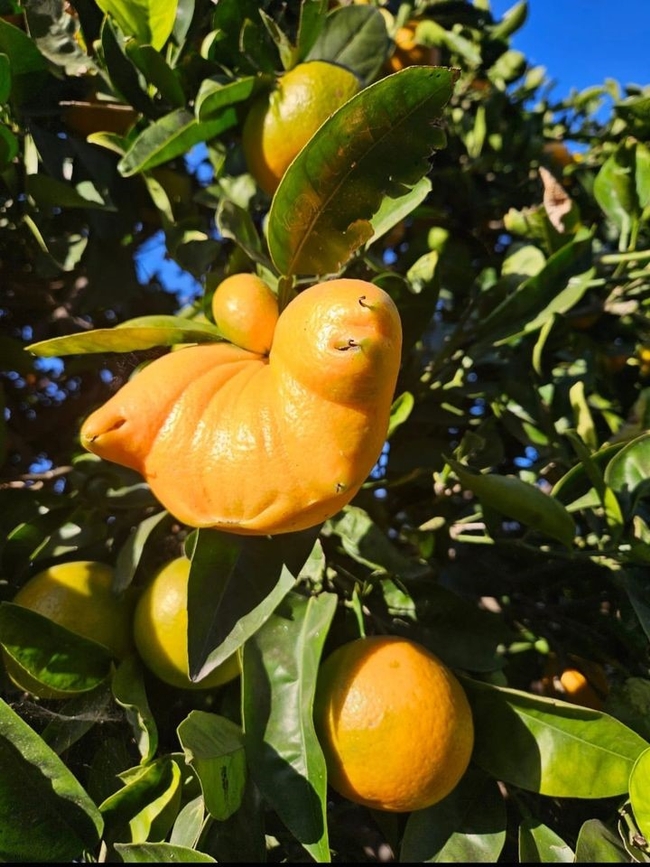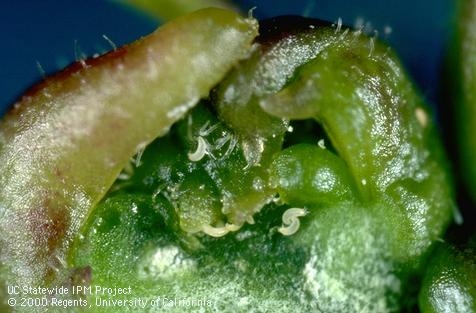Most commonly we associate the malformed fruit we see in lemons to citrus bud mite. But it can also occur on other varieties of citrus in Southern California, including in this case to tangelos. If there's enough fruit to bite into, it's still edible.
Citrus bud mite is very small, elongated and somewhat tapered at the posterior end, and has four legs at the front end near the mouth. Look really closely in this image to see the squiggly little thing that can cause so much damage, those little white, hooked shaped things within the larger buds.
Females lay about 50 eggs mostly in the bud scales of recent growth. Mite numbers peak in summer, and summer and fall blooms are most likely to suffer damage.
Citrus bud mite is primarily a pest of coastal lemons but in recent years has also been found in interior regions of Southern California. The mites feed inside the buds, killing them or causing a rosettelike growth of the subsequent foliage and distortion of flowers and fruit, which may or may not reduce yield, fruit quality, or both.
Recent research has failed to show any consistent harm caused by bud mite feeding under oil spray regimes, especially in Lisbon lemons, and bud mite damage is offset by the negative phytotoxic effects of oil. Research has not been done to determine if abamectin plus oil sprays for bud mite are economically justified. To detect bud mites before damage occurs:
- Check buds on green angular twigs from mid-spring to autumn.
- Collect one bud from each of 50 randomly chosen trees throughout the orchard.
- Dissect the buds under a microscope or use a 20X hand lens to determine the percent of buds infested with one or more live mites.
As an alternative to dissecting buds, bud infestation can be estimated from infested fruit buttons.
- Collect one green fruit, about 1.25 to 2 inches in diameter, from 50 trees scattered throughout the orchard.
- Remove the button and record whether the button or the fruit beneath the button is infested with live bud mites. The relationship between fruit and bud infestations is not linear, but a fruit infestation of 15 to 20% indicates a bud infestation of about 45 to 50%.
No bud mite threshold had been established; levels as high as 80% bud infestation have failed to cause consistent or predictable economic losses. If a reduction of bud mite numbers is desired, apply insecticides 2 to 3 months before the bloom that is to be protected.
READ ON For MORE INFORMATION FROM UC IPM
https://ipm.ucanr.edu/agriculture/citrus/citrus-bud-mite/



